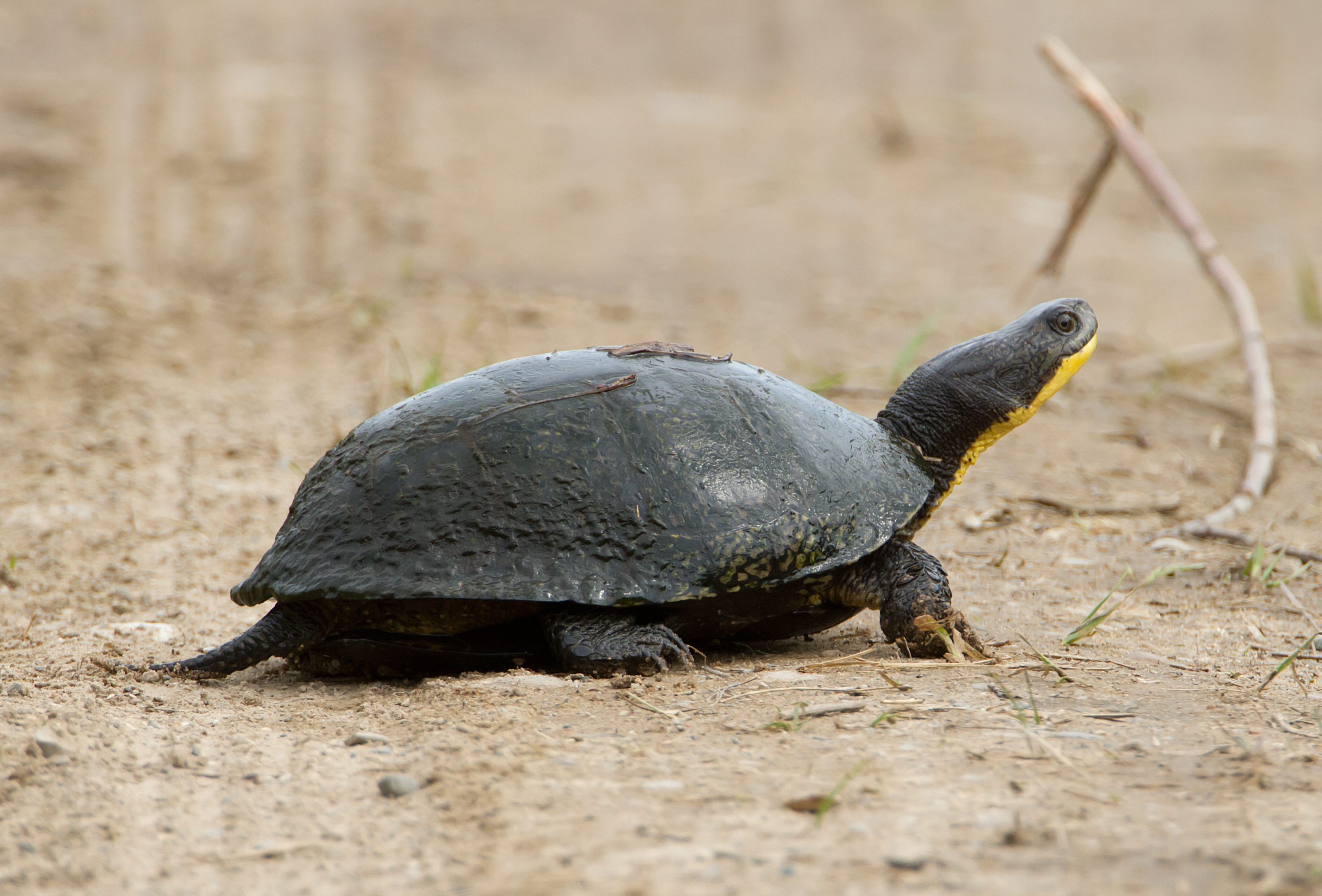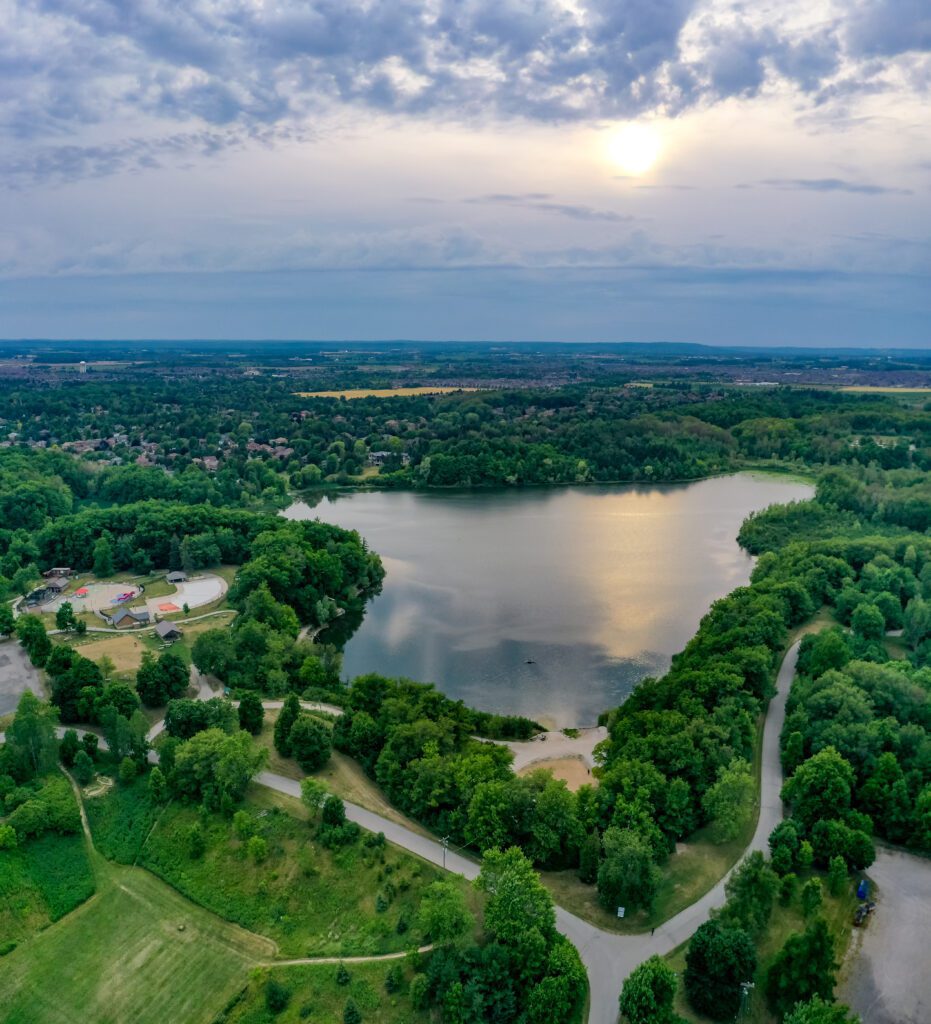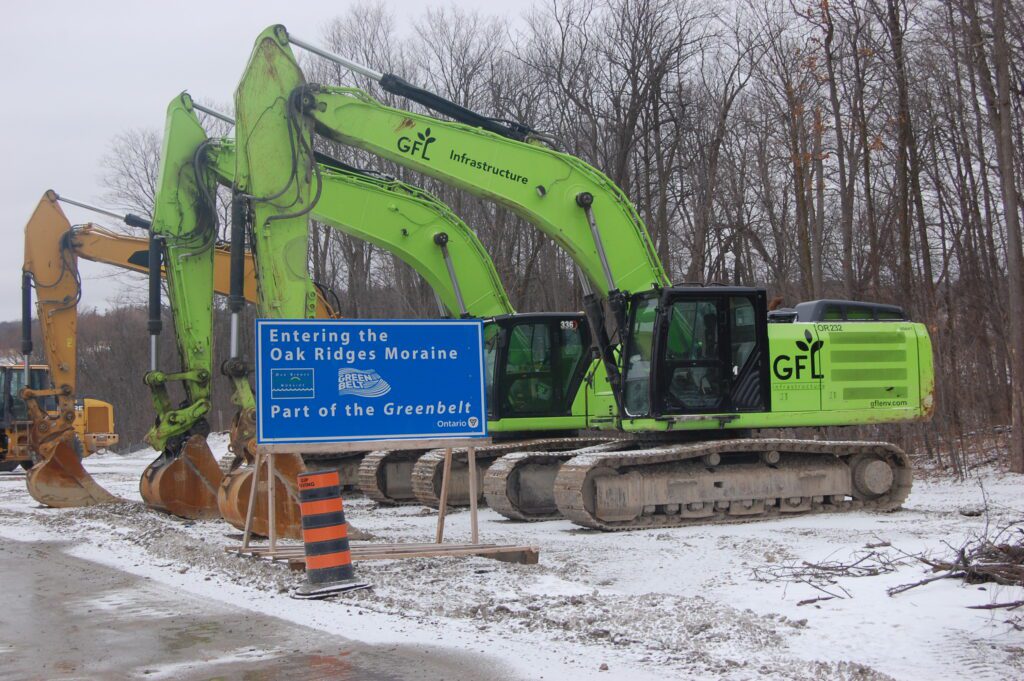By Environmental Defence’s count, the last several years have witnessed over 10 major changes to laws, regulations and policies that have rolled back protection for nature and wildlife in Ontario. We’re in the midst of a local and global biodiversity crisis – does this mean the current provincial government has an anti-environmental agenda?
Let’s look first at the current Ontario government’s record.
**Ontario’s Environment needs your vote: Pledge to Vote For The Environment on June 2**
WEAKENING PROTECTION OF ENDANGERED SPECIES

Endangered species are the rarest and most vulnerable plants and animals.By the time a species is designated under the Endangered Species Act (ESA), it’s because its very existence in Ontario has been determined to be hanging by a thread. The reason why species are endangered is usually loss of places for them to find food, reproduce and grow.
Since 2018 the ESA and its regulations have been weakened twice by the Ontario government. The first time was to allow developers to pay a fee instead of protecting the habitats of endangered species (called “pay-to-slay” by many observers) and the second time for the Minister to delay protections for newly listed endangered species at his discretion. On top of this, all of the endangered species that live in the publicly owned forests (37 per cent of the province’s total area) where the logging occurs were removed from protection under the ESA.
REVIVING HIGHWAY 413
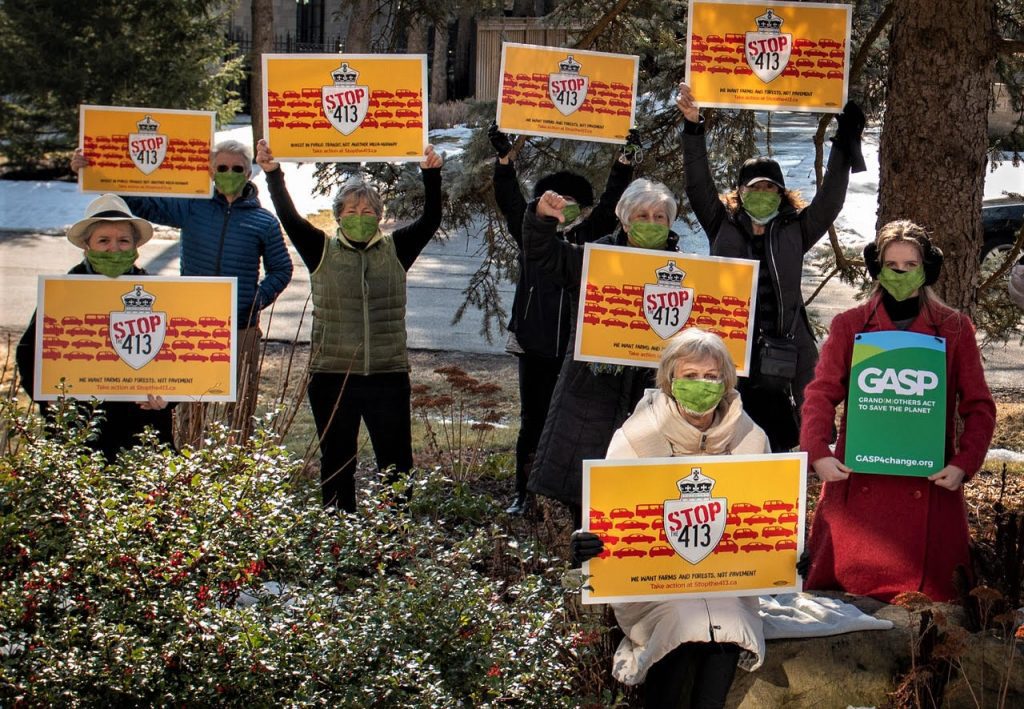 Highway 413 is a proposed 59 km, four to six lane, 400 series highway and its associated links to the to-be-extended highways 410, and 427 that will slice through parts of the Greenbelt, pave countless wetlands and forests, cross 85 rivers and streams and insert sprawl and big box stores onto some of Canada’s best farmland.
Highway 413 is a proposed 59 km, four to six lane, 400 series highway and its associated links to the to-be-extended highways 410, and 427 that will slice through parts of the Greenbelt, pave countless wetlands and forests, cross 85 rivers and streams and insert sprawl and big box stores onto some of Canada’s best farmland.
Highway 413 was found to be a very bad idea by an expert panel and rightly canceled by the previous provincial government, only to be revived by the current one. It is one of many now proposed in the province’s new transportation plan that marks a 1960s-style return to mega highway development across southern Ontario…with the accompanying widespread destruction of forests, fields and waterways.
REDUCING THE ROLE OF CONSERVATION AUTHORITIES
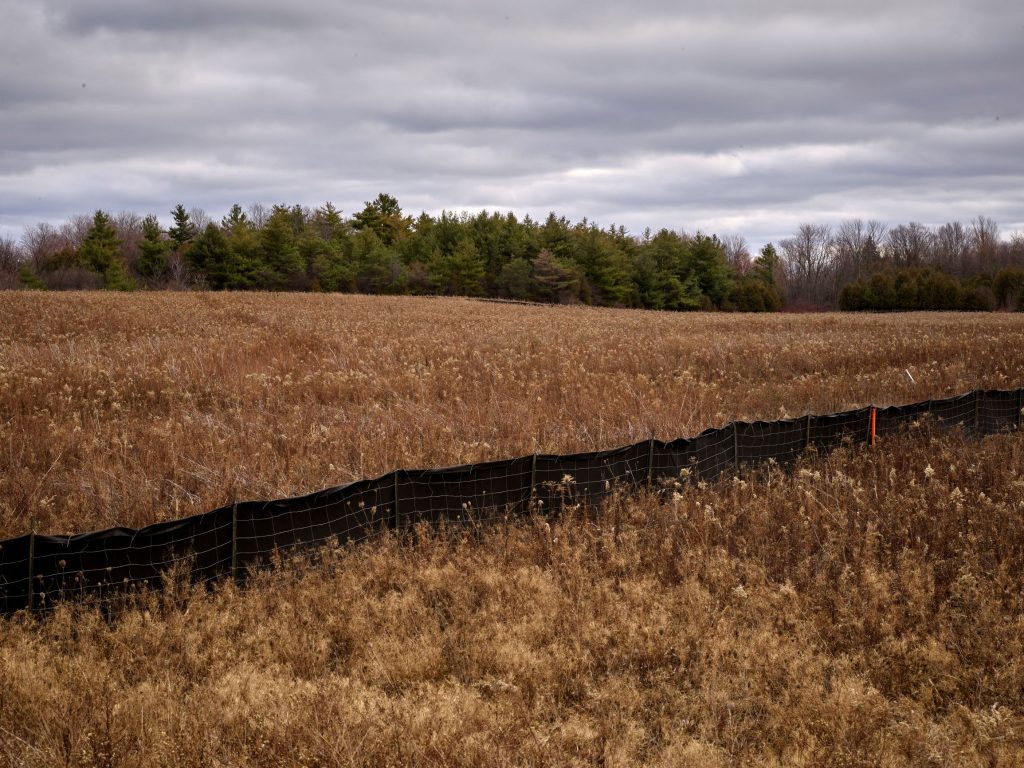
Ontario’s Conservation Authorities manage their own forests and natural areas. For decades, they have been key to providing insight and review over how private lands should be protected within municipal plans. But Over the last four years the Ontario government has removed their ability to provide expert review of development plans and passed legislation to force Conservation Authorities to allow the destruction of provincially significant wetlands. Such was the case at Lower Duffins Creek Wetlands, where only massive citizen outrage and the abandonment of the Amazon warehouse project saved the wetland that the Toronto Region Conservation Authority had been ordered by the province to allow to be developed.
ENCOURAGING MORE SPRAWL
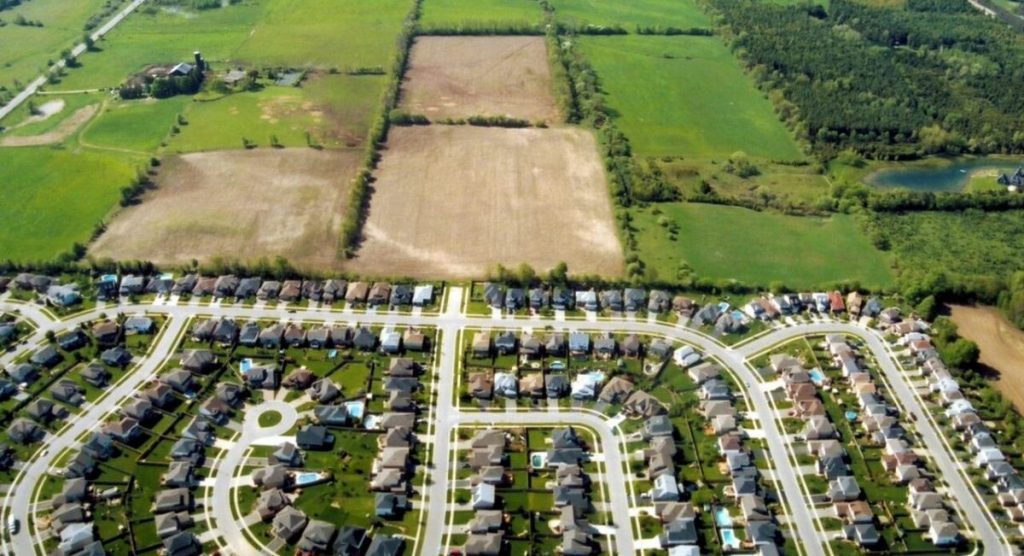 The sprawl of cities outward to consume forests, wetlands, river valleys and farmland is the major driver of destruction of nature in the Greater Golden Horseshoe. Changes to the Planning Act and the Growth Plan now mean cities are encouraged to spread out and build subdivisions of single family homes rather than build a variety of more affordable homes inside cities where people have access to public transit, work and schools.
The sprawl of cities outward to consume forests, wetlands, river valleys and farmland is the major driver of destruction of nature in the Greater Golden Horseshoe. Changes to the Planning Act and the Growth Plan now mean cities are encouraged to spread out and build subdivisions of single family homes rather than build a variety of more affordable homes inside cities where people have access to public transit, work and schools.
As a result, current municipal plans under development could swallow up thousands of hectares of natural lands. These rule changes have also been accompanied by a stratospheric increase in the use of Minister’s Zoning Orders (MZOs) that allow the provincial government to approve any development that they wish. Many of these have been used to approve development on ecologically sensitive or formerly protected lands.
FEW NEW PROTECTED AREAS
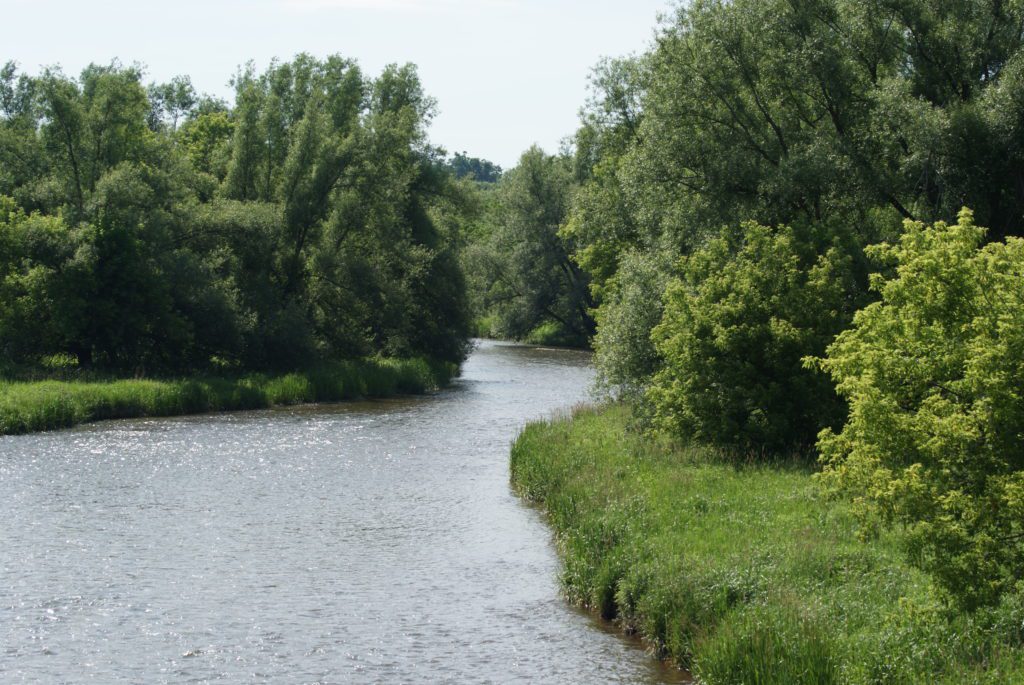 Only a few new, and small, protected areas have been established in the last four years, even as the federal government commits to significant well-funded expansions to protect 25 per cent of Canada by 2025 and is looking for partnerships with the Ontario government who controls, and decides the fate of large areas of natural habitat. So far no interest from Queen’s Park.
Only a few new, and small, protected areas have been established in the last four years, even as the federal government commits to significant well-funded expansions to protect 25 per cent of Canada by 2025 and is looking for partnerships with the Ontario government who controls, and decides the fate of large areas of natural habitat. So far no interest from Queen’s Park.
DOES THE ONTARIO GOVERNMENT HAVE AN ANTI-ENVIRONMENT AGENDA?
So the evidence shows that the current government has rolled back significant nature protection measures as part of a widespread attack on environmental values. Why this has been done has not been explicitly revealed, but in my view it is not because of a hatred of nature or the environment, but rather out of an outdated belief that the protection of nature is incompatible with business interests. When a conversation occurs about nature and development, the provincial government speaks often of a need for “balance”. But experience has shown Ontarians that this means that nature and wildlife will be sacrificed for the short-term and personal interests of influential individuals and corporations.
So I don’t feel there is a government agenda to destroy nature – rather it just is not valued, and it gets in the way of the priority of this government to allow development wherever, whenever, and however…and at no matter what cost to our future. Development takes priority over almost all other values and that is a mistake that we will all have to pay for.
WHAT YOU CAN DO
If you’re in Southwestern Ontario, you can join us at Emergency in Ontario: Rally for Climate, Communities and Nature! on Saturday, May 14th to show all parties that the climate and environment are key election issues for Ontarians.
You can also take the pledge to Vote For The Environment to commit to actually voting on election day – with the environment in mind.



